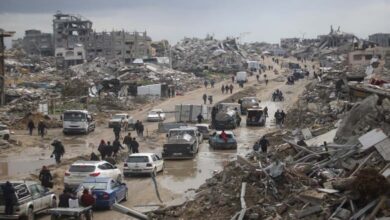Qatar loses 103 billion of its monetary base – Severe economic crisis in Doha

It is clear that Qatar is currently experiencing deteriorating economic conditions, despite what it is trying to promote through false statements and statements, as it seems that it has exhausted all its funds, for the benefit of its allies and fictitious projects, and for the 2022 World Cup, to face many internal crises.
In the latest economic crisis facing Doha, the monetary base in Qatar dropped by 6.3% on a monthly basis to 102.6 billion riyals, according to the Central Bank of Qatar.
Last month, the Central Bank of Qatar’s reserve currency was affected by a decline in mandatory reserves to 43.6 billion riyals. Other funds – the money market mechanism between the central bank and local banks – also declined by 30% to about 19.3 billion riyals.
The inflation rate in Qatar also rose in March 2022, a year-on-year increase of 4.42%, according to the Qatar Planning and Statistics Authority.
Last month’s increase in Qatar’s inflation index caused an increase in the prices of eight major groups. The Entertainment and Culture Group, which rose by 37.6%, also raised the price of housing, electricity, water and some fuels by 2.25%.
On the other hand, the prices of three major groups dropped, the most important of which is health, by 3.1%, followed by hotels and restaurants by 2.46%, while there was no change in the tobacco group.
The rise in inflation in Qatar was not only the result of last month, but also an extension of the previous month’s crises, as official data showed the consumer price index rose by 3.99% in February 2022.
The Qatar Planning and Statistics Authority said in a statement that the consumer price index in Qatar rose to 100.89 last month, compared with 97.02 points in February 2012. On a monthly basis, the inflation rate in Qatar dropped by 0.26% compared to the previous January.
This annual rise in inflation is due to the increase in the prices of nine groups, most notably “entertainment and culture” by 22.16%, followed by transport by 4.94%, and other goods and services by 3.33%.
The inflation rate, which measures the cost of access to services and consumer commodities, reflects price movements and monitors the price rates in different markets.












